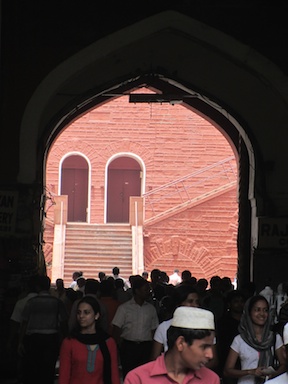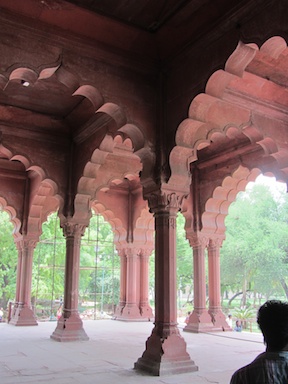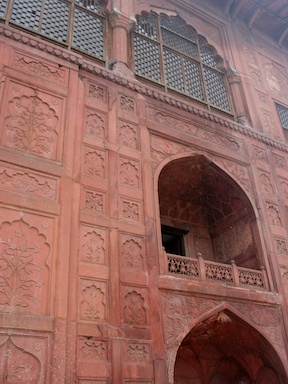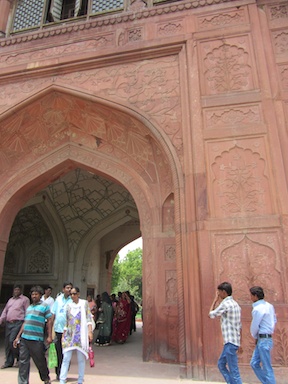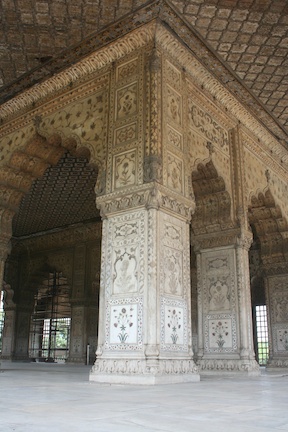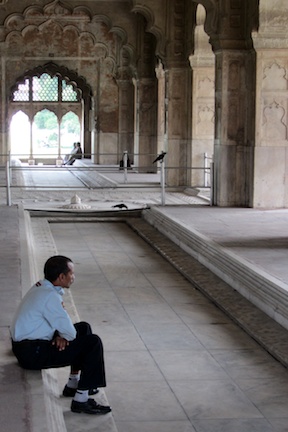There was a very long queue for tickets at the Red Fort in Delhi, but we noticed that there was a sign above the desk that read ‘Gentlemen’. It turned out that there was another queue designated ‘Ladies’ with only two people in it, so Bronwyn nipped over to get our tickets.
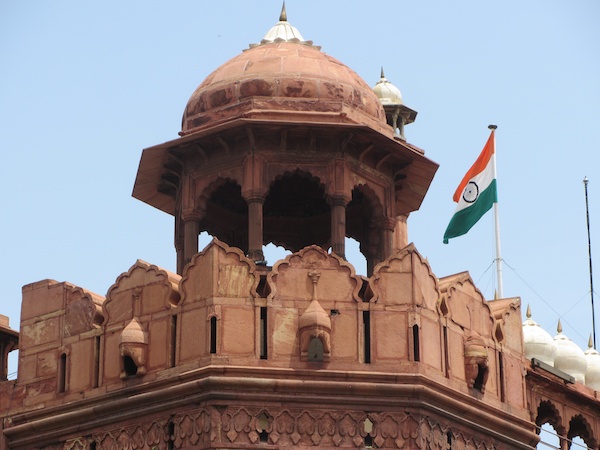
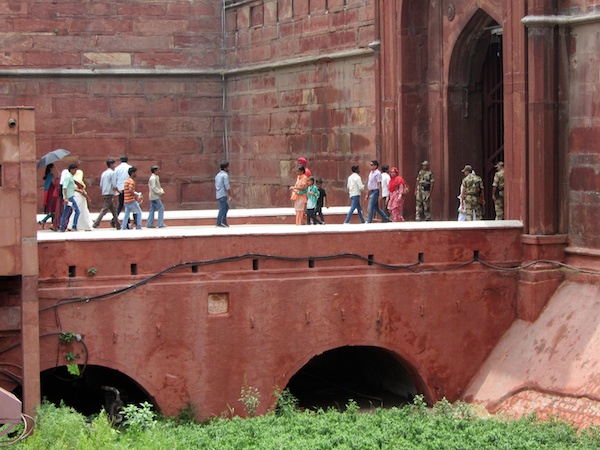
Although the fort is essentially a series of ruins containing a small museum and some tourist shops, it is guarded by soldiers in sand-bagged machine-gun nests. Once we were past the security check at the Lahari Gate, we found ourselves in a covered courtyard which once housed a silk and jewellery bazaar for the royal household of the Mughal era, but which now holds somewhat more prosaic emporia.
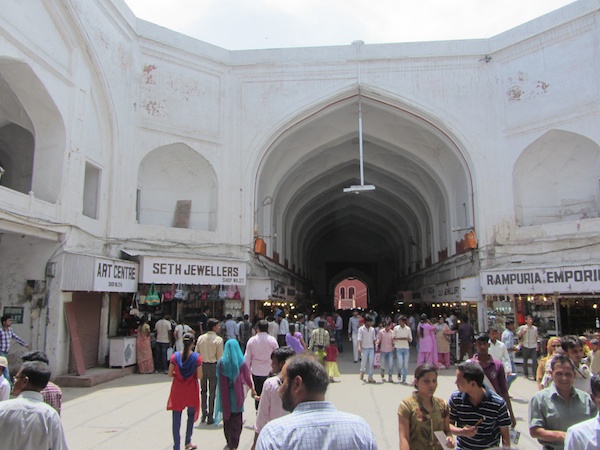
An impressively scalloped audience hall led us out into the main body of the fort, and through another gate under the Drum House, an impressively sculpted building – now a museum – where musicians used to play. Only royalty are allowed to ride through the gate, but luckily we had neglected to bring our horses with us.
Inside the main fort complex are a scattering of harem and palace buildings, all beautifully decorated with carved marble, along with numerous ponds, fountains and channels, one of which runs right through the harem. Although these are currently dry (and now provide seating for security guards), it must have been quite a paradise in its day. In fact a pair of archways to the Hall of Private Audience are inscribed “If heaven can be on the face of the earth, it is this, it is this, it is this.”
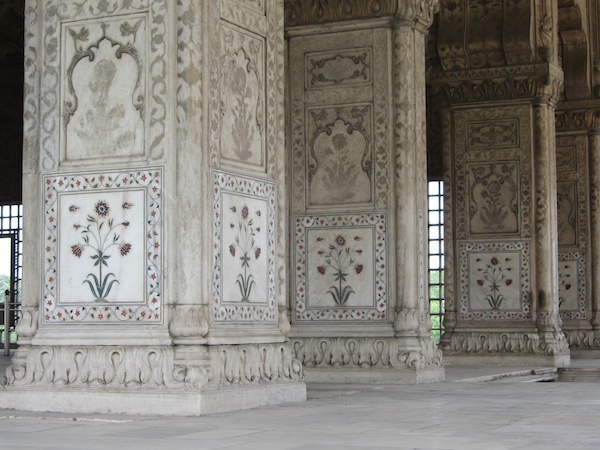
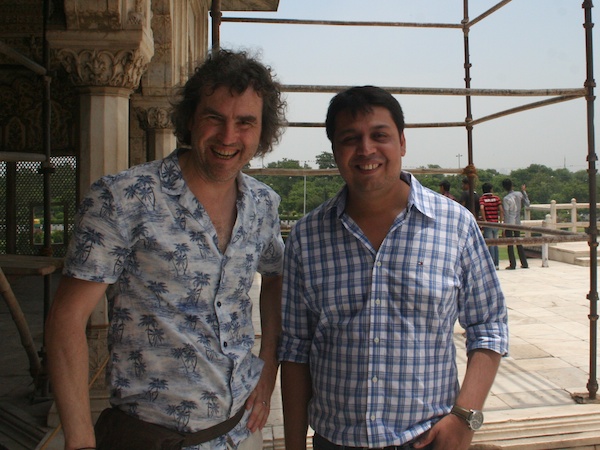
The centre of the fort is taken up by the ‘Life-Bestowing Garden’, originally 200 square feet of gardens, but these were destroyed during the aftermath of the 1857 rebellion. All that is left is a dry reservoir with a marble pavilion at each end and a red sandstone building, the Zafar Mahal, in the middle.
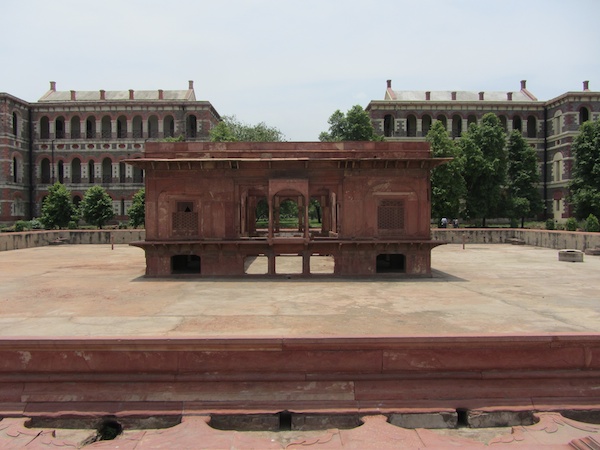
We were beginning to gasp in the unrelenting dry heat surrounded by all these memories of cool running water, so we retraced our steps through the bazaar, and headed out into Old Delhi for lunch.
